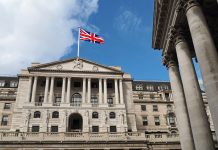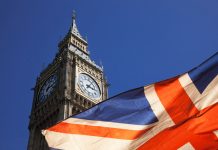The capital of Bangladesh, Dhaka, is often reminded as a poor, busy and polluted city in the heart of an often-flooded country. For a long time it was a quiet town, without any turbulence until recently some tension emerged. Deeper causes are not yet revealed but could have something to do with the high densities, increasing shortages of food, limited access to water and religion. With 170 million people in Bangladesh and 15 million in Dhaka only, the productivity of the country needs to be increased in order to be able to feed everyone and to become less dependent on aid from foreign countries. One way of increasing productivity is to grow food where it is consumed: in the city.
Food security
Looking at Dhaka from a food perspective many of its problems come together. The main issue is how to feed the rapidly growing population. In the first instance, this is a quantitative matter. Where can areas be found that are, together, big enough to produce enough? Secondly, it is a qualitative problem. Many fertile grounds have recently been built upon and forced out of production. Thirdly it is a matter of connections and distances. The distance between agricultural fields and city consumers increases, a problem that is exaggerated due to the vulnerability of the infrastructural system. The fourth underlying problem is the availability of water, both in qualitative terms of good water as in quantity, i.e. is there enough water in periods when it is needed? These problems are altogether amplified as a result of climate change. With a summer that is getting longer and longer, shifting rain periods, just outside the growing season and erratic rainfall, causing floods puts increasing pressure on the harvest itself. The absence of suitable land for growing food, the difficult distribution system, traffic congestion, water quality and – management and increasing pressure due to climate change multiple and interdependent problems hit the city.
In this complexity of problems, only integrated solutions offer a way forward. How can we provide a productive ground for solving the multiplicity of problems in Dhaka?
Methodology
As a first step, we conducted an intensive integrated design week for Dhaka. The advantage of a design-intensive is all information needs to be brought to the table at the same time (integration of information and solutions), and the pressure cooker of having to develop design propositions within a week for such a complex task prevents lengthy debates about details and challenges minds to identify the linkages and benefits of solutions for multiples problems. The set-up of the week was chosen as a design charrette (Roggema, 2013). The week starts with several introduction lectures briefing the students about Bangladesh and Dhaka specifically, about designing for a sustainable city and the program for the week. During the whole week, local Dhaka knowledge is available in person as a question booth, but also as a reviewer of proposals and shared commissioner of the assignments. Most of the work is carried out in groups. First, the participants are divided over groups according to themes of water, energy, food, traffic and metabolism. They needed to come up with systemic solutions for the entire city. After this, the groups were mixed in order to bring together knowledge and understanding about each of the themes in five spatial strips, horizontal cuts in the city, which together formed a whole. The task here was to integrate the systemic solutions for the five themes to one coherent story for each of the strips. After each of these tasks, the solutions were shared through intermediate presentations. The final stage of the design week concerned the detailed design for crucial points in each of the strips. This could be a certain energy solution, a detail of a neighbourhood or a market place. The week was completed with a final presentation in which each of the groups presented their entire story, from the entire city level until the detail they’d designed for a specific place. This approach put a lot of emphasis on collaboration skills of the participants and also to turn fresh information immediately into a visual representation. The design and drawing work and visualisation techniques are an important part of the intensive design week, and as such require substantial time.
Results
The results of this intensive way of working are collected at three spatial scales: the whole city of Dhaka, the intermediate scale of precincts and the local level of specific detail locations. At first, the problems at the entire city level are mostly systemic by nature. For instance, there is too much water being used which is also polluted and gets even more polluted after use and is discharged as wastewater in the river system. Or energy resources are used that pollute the city and increasing use leads to more pollution, the traffic and use of electronics is only growing hence the output of the energy system is ever-increasing air pollution. Additionally, these systems are interrelated and connected with each other in the urban metabolism model, in which the city is seen as an integrated system in which all kinds of resources are processed, leading to outputs such as waste, but also new knowledge and welfare for its inhabitants. The aim of the urban metabolism model is to reduce the use of resources, process them smart and reuse as much as possible, and reduce the waste streams while increasing the quality of life. For the energy, water, food and transport system Dhaka has been systemically redesigned during the Design Week. This has led to the proposal of new urban rivers, energy cascades, separation of traffic according to speed, a monorail system and floating markets and lonely farmers (growing food on their own rooftops). Through connecting places where food grows by water or road and provide clean water, spaces where food can be produced increase the amount of food produced in the city, it is closer to the consumers and can be transported easily.
At the intermediate level, the entire city system solutions are connected to localised precincts. Dhaka was divided into five horizontal ‘strips’ for design reasons. In each strip, a specific connection between infrastructure, housing, water management, energy supply and food production is designed. The northernmost strip is connecting neighbourhoods with each other through a new green infrastructure in which water will be stored and food can be produced. It forms the cement between the residential areas. The second northern strip creates a central green water space in which a newly reconstructed river on two levels produces fish and contains also energy-producing cascades, while the surrounding green provides space for growing vegetables and fruit. From these places, the product is easily transported to crossroads in the precincts, where local markets take care of further distribution. In the central strip, new waterways collect rainwater to be used to grow food, which is brought to food hubs in the food-corridor connecting the places where the food is sold in the multi-layered market, with a fish factory and a green food roof on top. The fore southern strip emphasises the operation of energy cascades, which are small elevation differences where water flows downwards. Each of the steps in the cascade is provided with its own typical food production in a sawah-like system. The southernmost strip of the city centre proposes to connect hubs with transport, water and food from north to south and from east to west, collecting rainwater along the way and storing it in two big storage ponds. The connection of the western pond with the existing river creates a natural island in the old river.
When the five strips are reconnected again (Figure 1) the City of Dhaka forms a hybrid design system in which elements of the strips are connected to the bigger picture. The interesting finding is that the diversity of the strips can still form one hybrid whole, in which the basic system operate in a much more sustainable way together than currently. The potential of food production, estimated at the whole city level is elaborated in five different ways and underpinned by the design exercises at the precinct level.
At the local level finally, concrete designs are created for solutions in different fields such as water, or energy or food, made specifically for the place, but still integrated with the other themes and connected to the higher levels. Ideas for sustainable living, a regenerative landscape with water storage and food production, a water-energy cascade, a recycle river, an elevated traffic system as a riksja highway and a diversity of hubs have been designed at this level. They all illustrate the integration of topics and the sustainability the solutions can offer at the lowest scale. Each of the detail designs gives insight into the productivity of the specific area and adds up to a productive Dhaka.
A Productive Dhaka
The example to redesign Dhaka in an intensive design week has several advantages. With the right scope it enhances the amount of food that can be grown in the city and thus raises the productivity of the city. Secondly it illustrates that productivity/food production can be used as a mechanism to leverage other thematic solutions, for instance increase of renewable energy supply, an advanced infrastructure system, and cleaner water. The solutions brought forward in a week have an originality that can only be reached without too much knowledge about the site. There are always enough reasons for not proposing innovations and when these are known during the design process, innovative designs are hard to get. The flipside of this is that some solutions might be a little out of scope. Therefore, a follow-up after this week is required during which governmental authorities, together with entrepreneurs, NGO’s and residents can elaborate the suggested solutions, especially at the precinct level and for crucial locations in the city.
The approach used for Dhaka must be seen as the first step towards the integration of policy and improvement of sustainability for the inhabitants of the city. The results of the Intensive Design Week show a range of innovative ideas, spatial solutions that generally solve more problems than the one it was invented for, and integrate not only themes and topics, but also time horizons, spatial scales and people. In this perspective, it is the first step in a longer pathway to come. But it is also a necessary step as current policy development often gets stuck in the daily routines of impossibilities and constraints. Therefore this first step is cheap in organising, but valuable in its impact and can be very useful for many other cities around the globe.
References
Rajdani Unnayan Kertripakkha (RA JUK) (1997) Dhaka Metropolitan Development Plan (1995-2015). Volume-I Dhaka Structure Plan (1995-2015). Dhaka: Dhaka Metropolitan Development Planning (DMDP)
Roggema, R. (Ed.) (2013) The Design Charrette: Ways to Envision Sustainable Futures. Dordrecht, Heidelberg, London: Springer, 335 pp.
Roggema, R., A. Rahman and J. de Vries (2015) Dhaka Productive City; Finding Spaces to Grow Food. Velp: VHL Press
Rob Roggema with Abiar Rahman, Jeroen de Vries and VHL teaching staff and graduation students Landscape and Garden Architecture
Dr Rob Roggema
Professor of Design for Urban Agriculture & Slow Urbanism
VHL University of Applied Sciences
Tel: +31 6 19267143
rob.roggema@wur.nl










